Paring It Down
Dave explains how he’s grown to like the idea of carrying only what’s needed to the bank, and how he’s now involved in designing kit for like-minded anglers
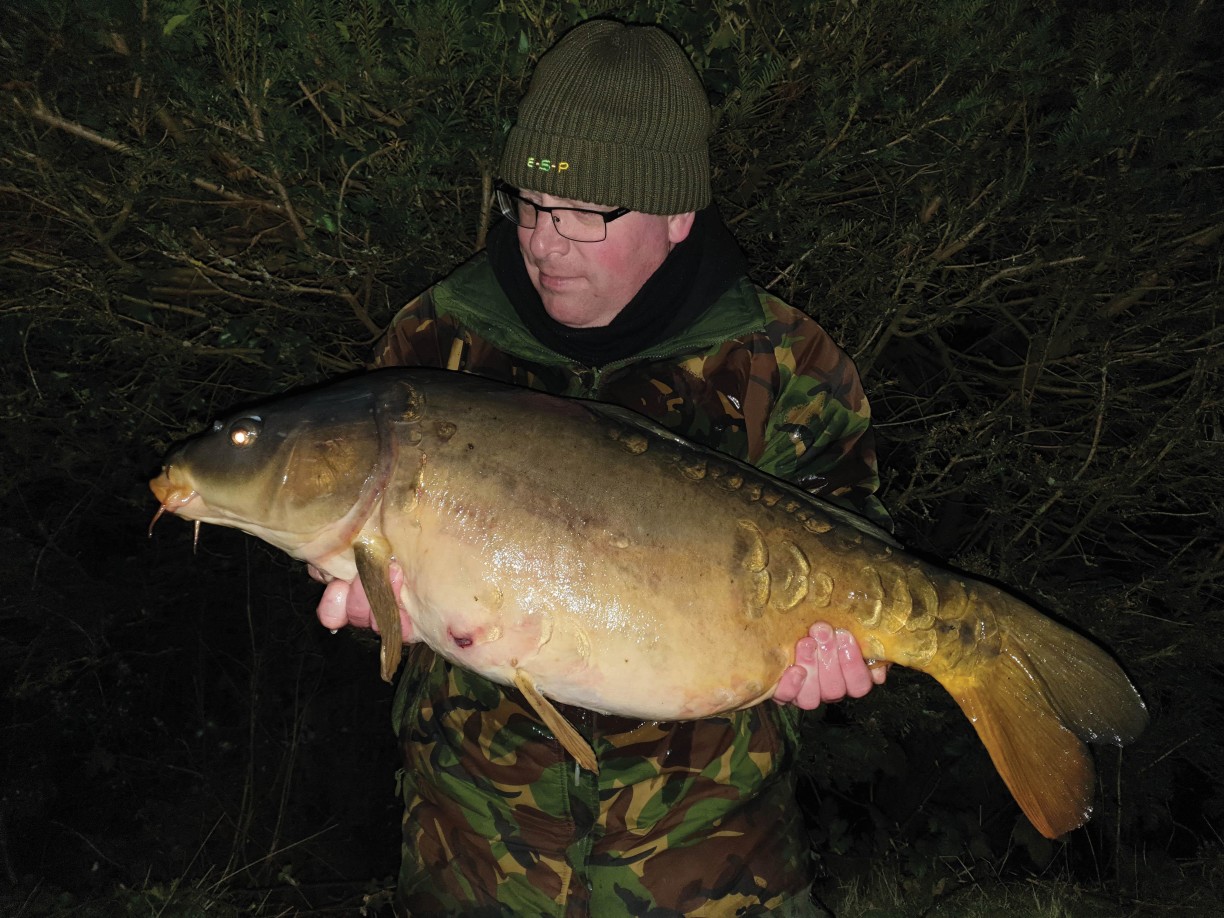
I have always tried to keep my gear as light as possible, from right back when I was a kid starting out. It was probably born out of necessity. I didn’t have much fishing tackle and what I did have was carried on my back, or on my bike, my seat box on the back rack, with my rods tied to the crossbar. When the amount of gear I accumulated became too much for my bike, I acquired my first trolley, one of those two-wheeled jobs you pulled along, and which would inevitably topple over on anything but the most even terrain. The mile-long walk to my local lakes involved crossing several stiles and gates, and a railway line, the trolley having to be unloaded and reloaded at each—no wonder I still have an aversion to carrying too much gear!
I guess this predilection for travelling light followed me into carp fishing, and I have always preferred to keep my gear relatively lean, often at the cost of comfort. I have never been a fan of big heavy shelters, for example, going right through winters under an open-fronted Aqua 50 without a groundsheet—granted I have never done really long sessions. It’s a trait I can’t shake, as I just don’t like having mountains of gear.
In more recent years, most of my fishing has revolved around short overnighters or day sessions, often twelve hours or shorter, or even little three- or four-hour evening trips. As I tend to fish low-stock, quieter venues, I would often pre-bait between trips, knowing with reasonable confidence that I would be able to get in the swim when I returned. This style of fishing means that I’m even less likely to be taking buckets of bait on a quick worknight trip, and as I often need to set up quickly when I arrive of an evening, hookbaits are usually already attached to the rigs, which are clipped up to the marks.
As such, because of the level of preparation involved, I often don’t need much excess gear. A few years ago, I even started looking at my Porterlite with a critical eye—Do I even need you? I thought to myself. It was just something else to load into, and unload from the van in that hurried, wrap-up before work, when I could easily carry all my gear on my back.
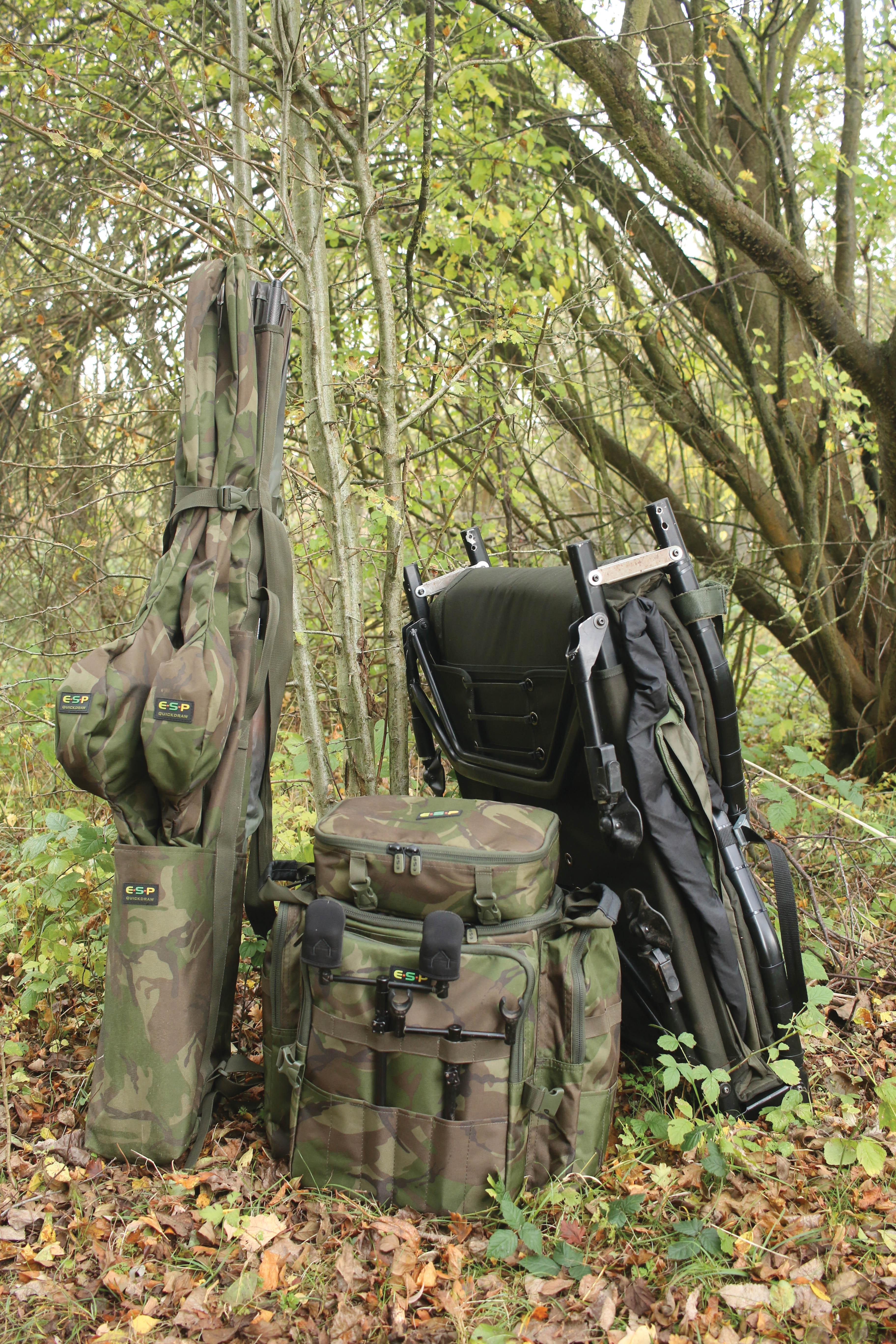
I became slightly obsessed with streamlining my gear as much as possible, and the term ‘gram counting’ entered my vocabulary. This has nothing to do with anything illicit, but is a generic term used in the hiking and mountaineering game, where they have got lightening the load—while remaining well equipped and as comfortable as possible—down to a fine art. So, I have fined everything down as much as possible. Gone are the days of a big, baggy carryall slung on a barrow.
Bedchair headache
For any carp angler carrying their gear, though, the biggest headache is a bedchair. They’re big, bulky and heavy, to the point where compact sleep systems weighing well over 10 kilos are described as being lightweight! It’s all relative, I suppose. I had a bed made to my own specifications, which weighed just under 6 kilos, and by removing the elastic bungee cord and replacing it with cable ties to attach the mattress to the frame, I got it down to 5.5 kilos. This made it a lot firmer and more comfortable. I know this is inconsequential to anyone barrowing, but when carrying your kit, you can feel the difference. And like I said, I’m counting those grams!
I use a US Army ACU sleep system and have done so for years. It’s definitely the best bag I’ve ever used, and with a comfort rating well below sub-zero degrees Celsius and a Gore-Tex cover, it still weighs only just over 3 kilos. So with a combined weight of under 9 kilos, my ‘scratcher’ is perfectly comfortable to carry with a shoulder strap attached.
Hiding water butts in the bushes around a venue when I’m on recce trips is another major way of reducing the weight I have to transport.
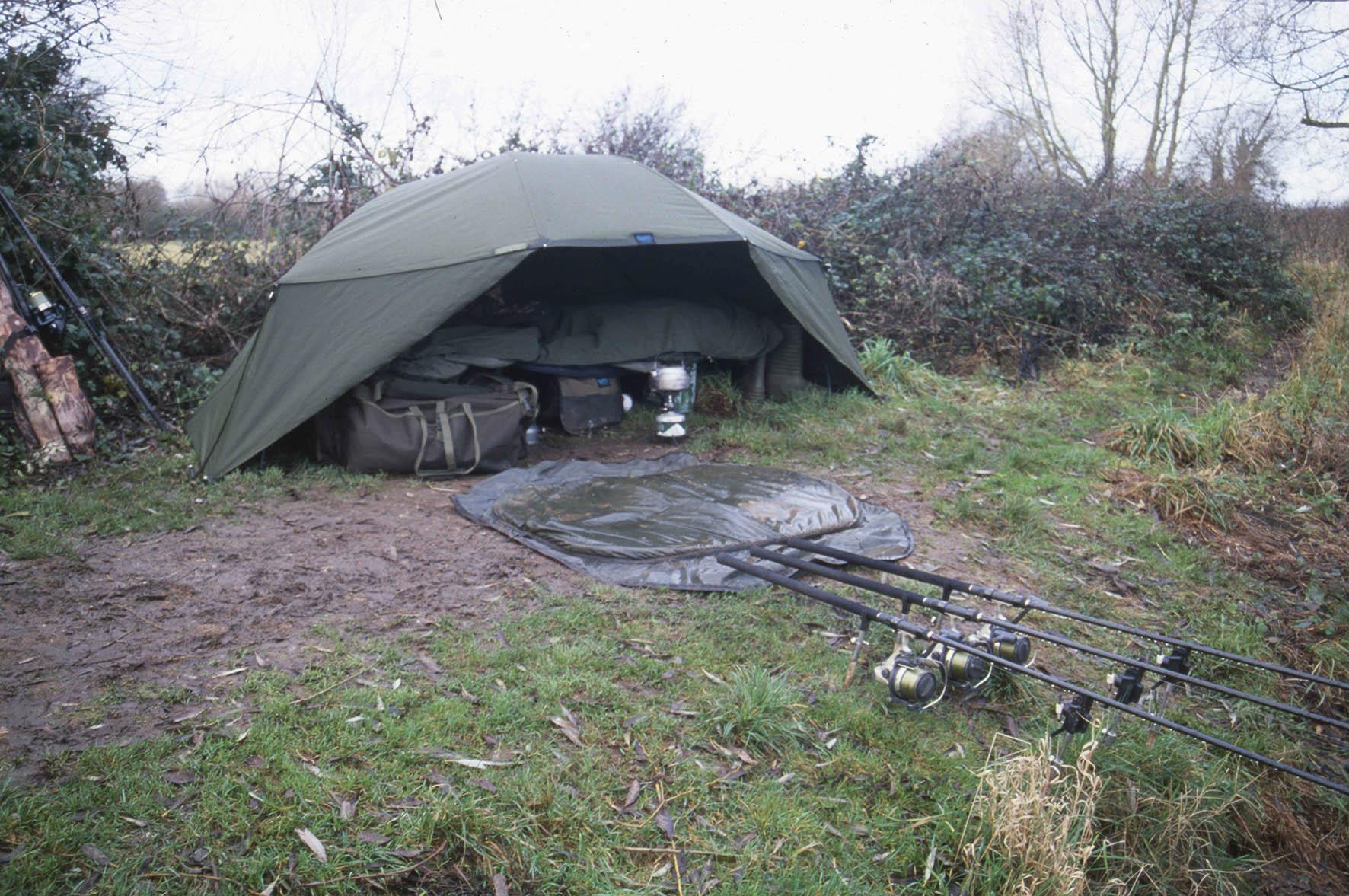
Going shorter
Up until a couple of years ago, I had been using Tel’s 12ft 9ins rods for pretty much all my fishing. In their various guises, they had been my rod of choice for well over 15 years. But shorter rods are definitely a major advantage when you’re carrying your gear, especially when that involves going through heavy undergrowth and the like. In those situations, longer rods can be a bit cumbersome. So it was when my short-session fishing started to involve a bit of ‘guesting’, that I quickly discovered the benefits of retractable rods. A friend had a set, and considering one part of the walk to the lake involved crawling under a fence, his set-up was a lot more suitable, packed away in little short, padded sleeves.
The next day I ordered a set for myself, 10-footers with a test curve of 3.5lb and with sleeves to match. I then made a landing net handle from an old Drennan Match model which, when broken down into two was the same length as the retracted rods. It all looked so neat, and fitted in my quiver so that everything was the same length… even my 50ins brolly. The weight saving was obviously significant, compared to what I might carry when using conventional rods. All these attributes were what I wanted, and perfectly suited my quick-fix trips, be they overnighters or short evening sessions. The compact nature of the set-up definitely made me more likely to want to go for just a few hours, than had I been using heavier, bulkier gear.
The rods I bought were cheap, though. They were perfectly okay to use and I caught a few carp on them, but they felt a bit sloppy. They had one too many guides for my liking and a handle which felt a little short. Towards the end of 2019 I started working on a range of retractable rods for ESP, specifying a higher grade of carbon with five lightweight, stainless guides and an SiC tip, plus a longer handle, one which resulted in lighter, better balanced and more responsive blanks. Purely down to personal preference and after too many years of using Tel’s rods, I had them made with full-length Duplon handles.
The resultant sample sets arrived just as we came out of the first lockdown in 2020, and we got fishing with them straight away. The initial range comprised 9ft 3lb and 3.25lb models, and 10ft 3.25lb and 3.5lb. We subsequently had samples made of a 10ft 4.5lb spod version. The blank finish and handle on the first ones didn’t look quite right—we went for brown Duplon initially. Tweaks were made and a second set of samples were ordered.
Over the last 18 months, Alfie Russell, Gaz Fareham, Kev Hewitt, Jack Reid, Ross Bancroft, Nick Dunn, Benji Brettle, Nathan Martinez and I have put these rods through their paces, and we’ve thoroughly enjoyed using them, carp to over 40lb being caught. They have performed in all sorts of situations, from chucking out and fishing under the rod tip, to river and boat work. They all feature a lovely playing action, with the 10ft 3.5lb being an excellent weapon for really weedy situations. The spod rod compresses very nicely with a midi Spomb, delivering the payload with ease and accuracy.
The ESP Onyx Quickdraw rods, as they have been named, complement the Onyx Compact reels, or any of Emblem 5000 size or smaller.
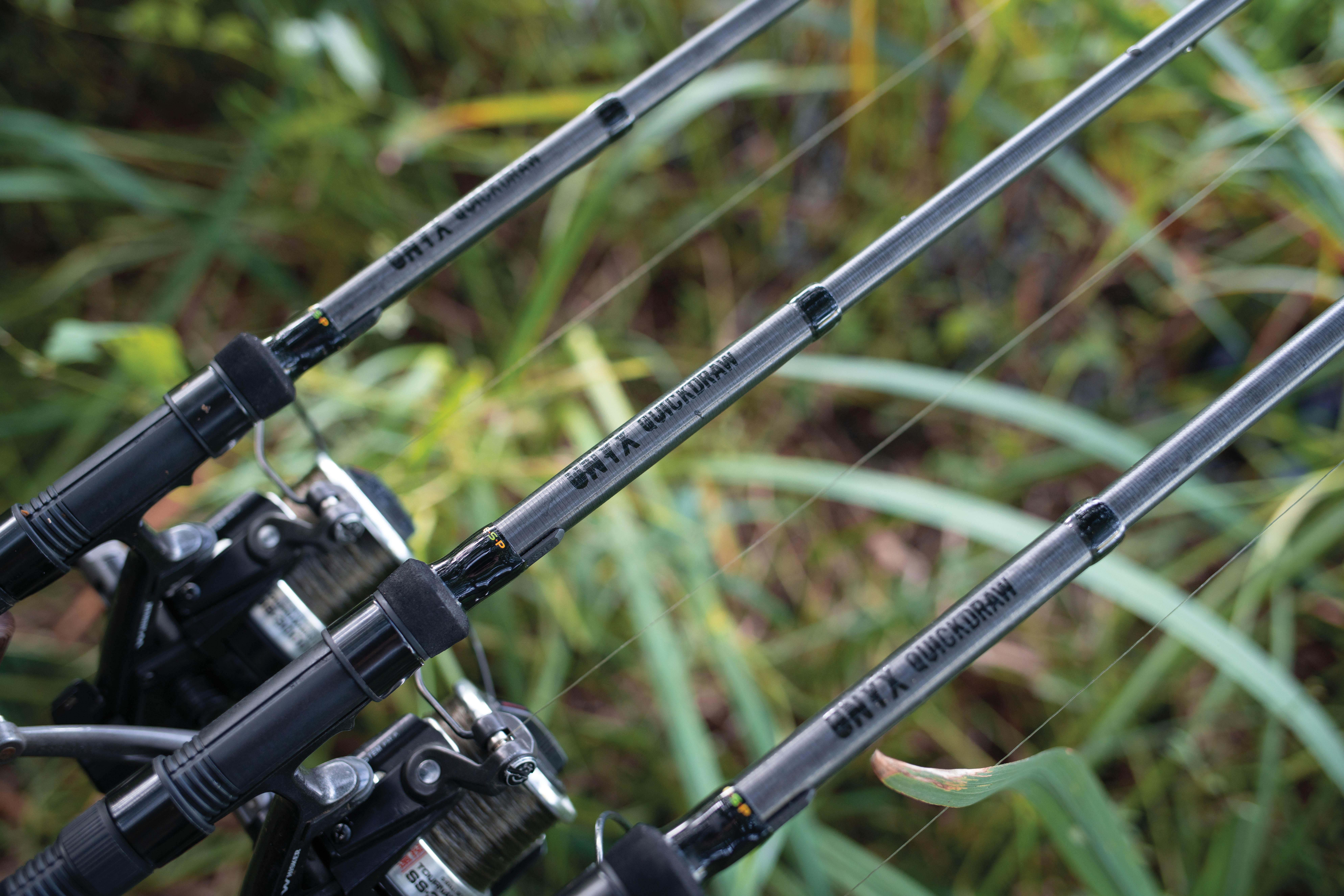
Marrying with a net
Along with the rods, of course, we needed a net. The Quickdraw Twistlock landing net was then developed. This has a two-piece, telescopic carbon handle which retracts to 44ins—the same length as a 9ft Quickdraw rod—and extends to just over 6ft. The Twistlock mechanism within the handle allows it to be locked at any point along its overall length, making it ideal for all-round use when fully extended, or shortened down for restricted, close-quarters or boat work.
The net comes with stiff, lightweight 42ins arms and a super-strong but lightweight stainless spreader block, which we machine at our Oxford factory. A slightly smaller version of the block used on the new Terry Hearn net. The mesh is nice and deep, for retaining fish in the margins for short periods.
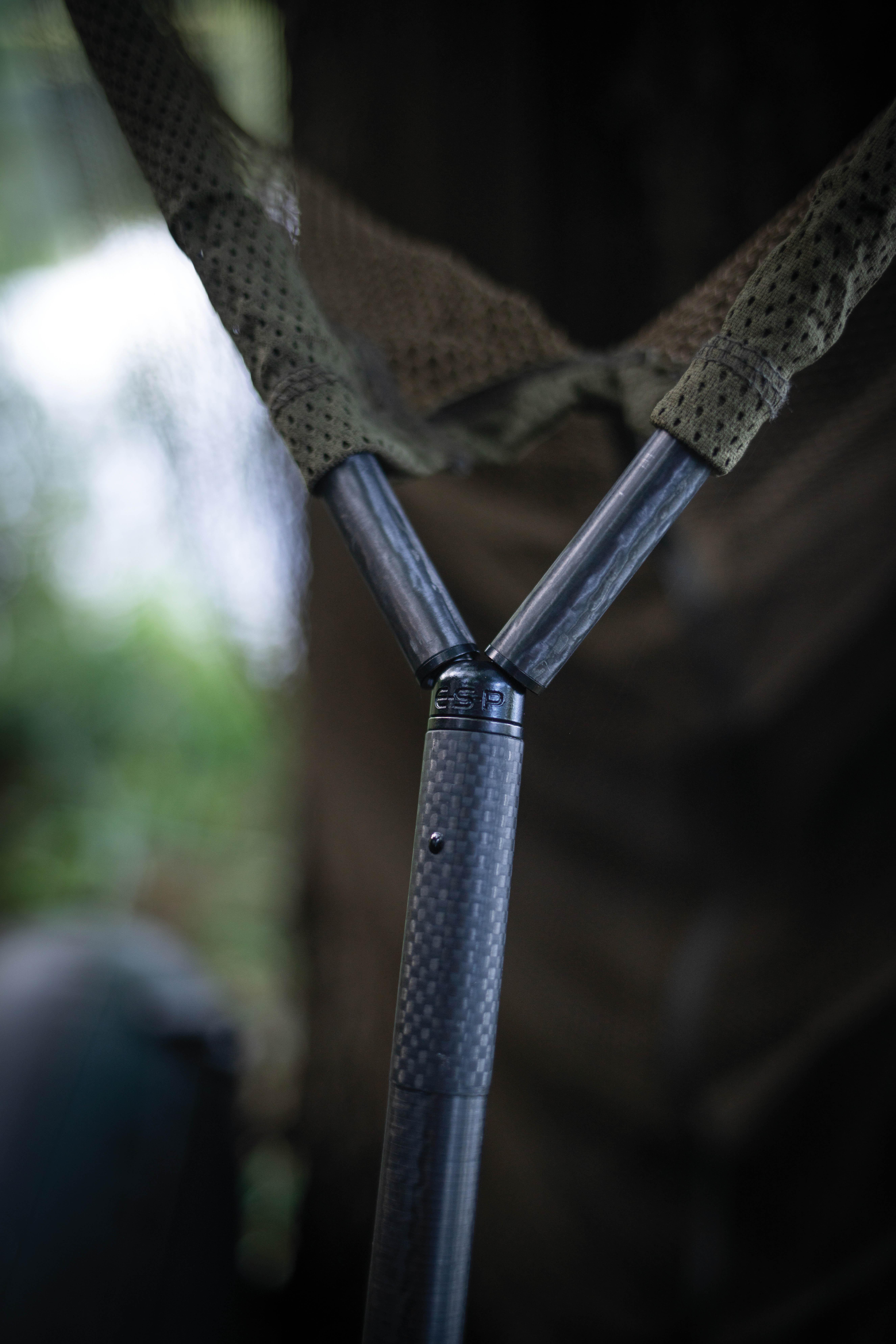
Quiver and sleeves
Of course, retractable rods are best kept in sleeves, so these were designed in our popular camo material as part of the Quickdraw luggage range. They are of simple design, padded but not overly so, with a full-length zip that makes getting the rods in and out quick and easy. Also in the range is a small, lightweight quiver to carry the rods, along with a net, retainer, brolly, banksticks, etc.
Completing the initial range of Quickdraw luggage is the rucksack. It’s compact at 40 litres, but has loads of carrying capacity due to the way it has been configured. We designed this rucksack based on the needs of the short-session and mobile angler. I felt it was important to have essential items to hand when arriving at a swim, be that be for quickly setting up ahead of an overnighter as the light starts to wane, or when moving on showing fish. There are multiple bankstick retaining slots on the three outside pockets, so single sticks or sticks with buzzer bars attached can be stored in transit on the back or sides of the rucksack, making them easily accessible. But even more important is the detachable tackle case that clips to the top of the rucksack’s main compartment. This can house essential terminal tackle and bits and pieces, as well as pots of hookbaits, so that the rods can be baited speedily and deployed as quickly.
Rucksack storage
Over the last 12 months of testing the rucksack, I have settled on using the small version of the ESP Camo Tackle Case for all my terminal tackle, and this fits snugly inside the detachable case. On the other side of a central divider, I have multiple pots containing a variety of pop-ups, tigers and other hookbaits. Rather than using the large pots that pop-ups are usually supplied in, I have decanted smaller quantities into clear squeeze-top pots, those generally used by herbalists and easily obtainable via eBay. This gives me a good variety of hookbaits—probably still too many!—without adding a ridiculous bulk. After all, do you really need, say, 80 to100 of each hookbait? And then times that by multiple large pots!
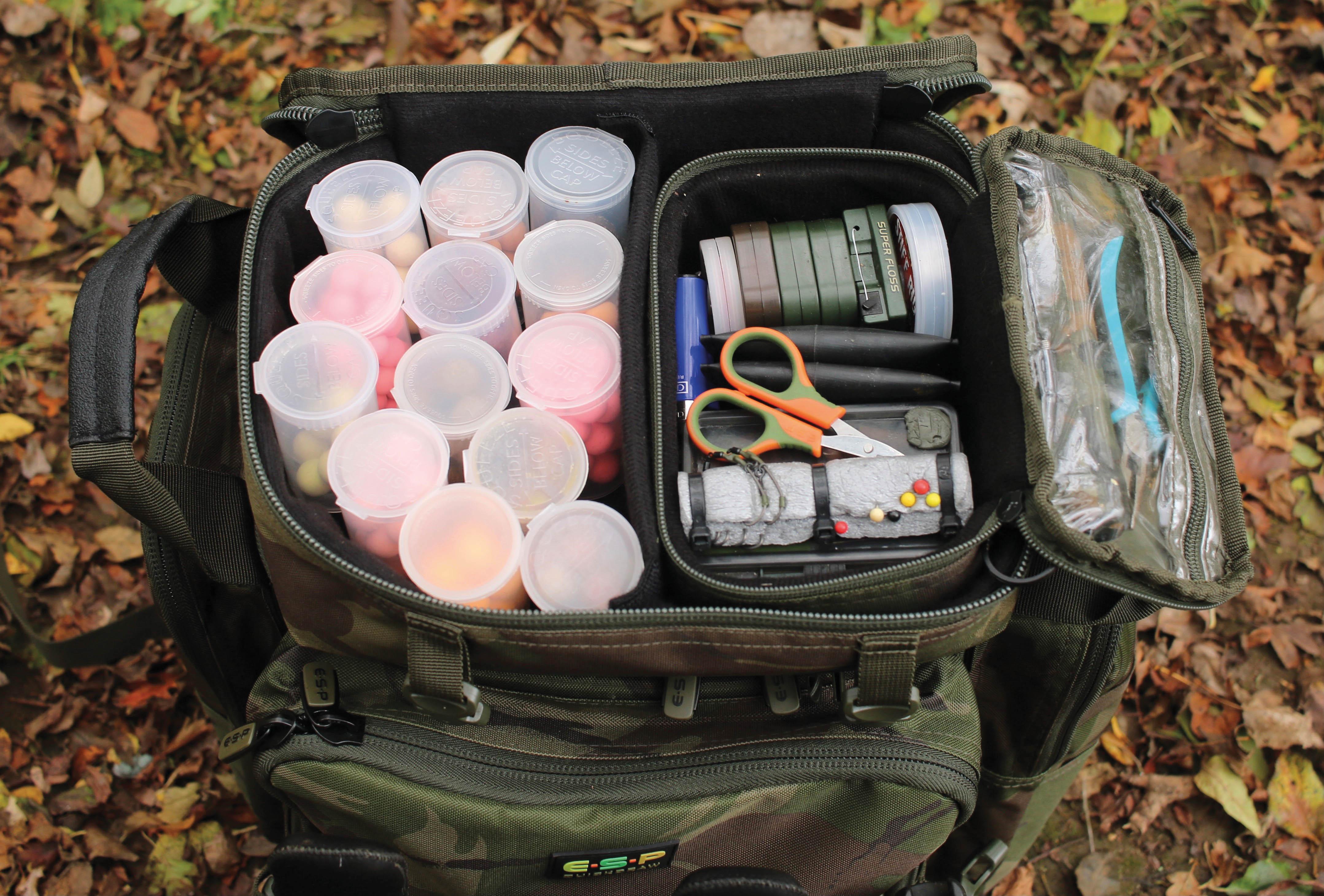
The rucksack sits high on the back and is comfortable to carry, even with a Quickdraw mat clipped to the outside. The large central compartment is padded for comfort and maintains its shape even when it’s not full, so it sits up nicely and makes stuff easy to find inside. Three roomy, external zipped pockets provide loads of extra carrying space and make it easy to keep everything organized.
The ESP Quickdraw range of rods, net and luggage is a top-quality, concise, selection of kit, developed to cater for the angler who prefers to travel relatively light for short sessions or opportune trips. I’ve grown to like this gear and that style of fishing so much that I have even downsized my van!
The rucksack and mats are available now, while the rods, net, quiver and sleeves will be available early in 2022.



